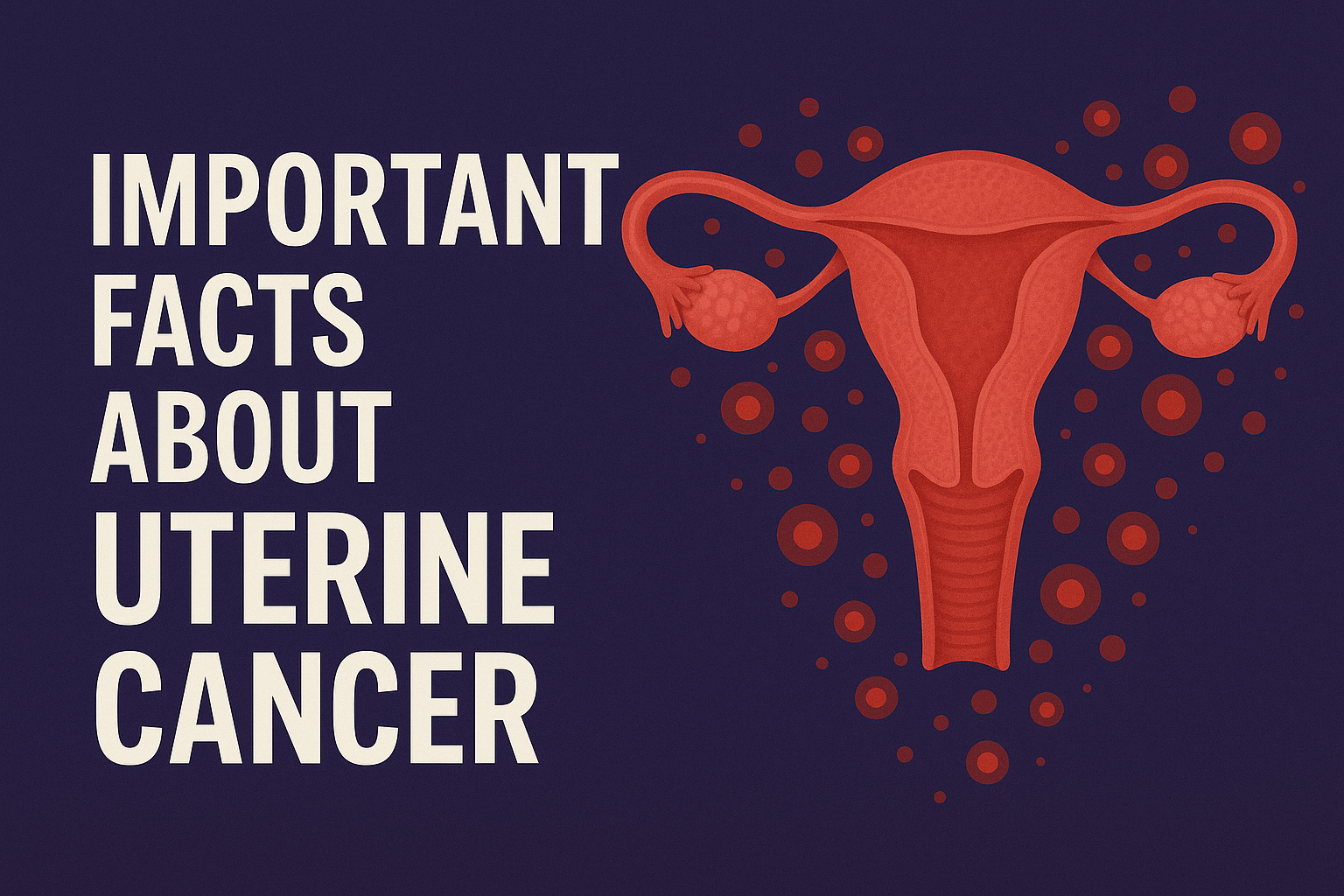Uterine cancer, also known as endometrial cancer, is one of the most common gynecological cancers. It primarily affects postmenopausal women but can occur in younger women as well. Fortunately, when caught early, uterine cancer is highly treatable. This article will walk you through the key information every woman should know.
What Is Uterine Cancer?
Uterine cancer starts in the lining of the uterus (endometrium) and can spread to other parts of the reproductive system if not detected early. The two main types are:
- Endometrial carcinoma: The most common form, arising from the endometrial lining.
- Uterine sarcoma: A rarer and more aggressive cancer originating in the uterine muscle.
Common Symptoms
Uterine cancer often presents early symptoms, which is why awareness is crucial. Watch for:
- Abnormal vaginal bleeding (especially after menopause)
- Pelvic pain or pressure
- Unusual vaginal discharge
- Pain during intercourse
- Unexplained weight loss or fatigue (in advanced stages)
If you notice any of these symptoms, consult a gynecologist promptly.
Risk Factors
Several risk factors may increase the chance of developing uterine cancer:
- Age over 50
- Obesity
- Estrogen-only hormone therapy
- Never having been pregnant
- Polycystic ovary syndrome (PCOS)
- Family history of uterine or colorectal cancer
- Diabetes or high blood pressure
How Is Uterine Cancer Diagnosed?
Diagnosis typically involves:
- Pelvic exam: To check for abnormalities
- Transvaginal ultrasound: To examine uterine thickness
- Endometrial biopsy: A tissue sample is analyzed for cancer cells
- Hysteroscopy: A small camera is used to inspect the uterus
- Dilation and curettage (D&C): May be performed if biopsy results are unclear
Stages and Prognosis
Staging determines how far the cancer has spread:
- Stage I: Confined to the uterus
- Stage II: Spread to the cervix
- Stage III: Spread to nearby tissues or lymph nodes
- Stage IV: Distant spread to organs such as the bladder or lungs
Early-stage uterine cancer has a five-year survival rate of over 80%.
Treatment Options in 2025
Modern treatment plans depend on stage, age, and general health, and may include:
- Surgery: Total hysterectomy (removal of uterus, often with ovaries and fallopian tubes)
- Radiation therapy: Used after surgery or for inoperable cases
- Hormone therapy: Slows growth of certain tumors
- Chemotherapy: For advanced or aggressive types
- Immunotherapy and targeted therapy: Emerging options for advanced cases
Prevention and Lifestyle Tips
While not all uterine cancers can be prevented, you can lower your risk by:
- Maintaining a healthy weight
- Managing diabetes and blood pressure
- Using birth control pills (linked to lower risk)
- Treating hormone imbalances
- Staying physically active
Final Thoughts
Uterine cancer is serious but treatable, especially when detected early. Don’t ignore symptoms like postmenopausal bleeding. Get regular checkups, talk to your doctor about any changes, and take control of your gynecological health.
You May Also Like:
- “Understanding Hysterectomy: When and Why It’s Done”
- “How to Reduce Your Risk of Gynecologic Cancers”
- “What to Expect During an Endometrial Biopsy”
